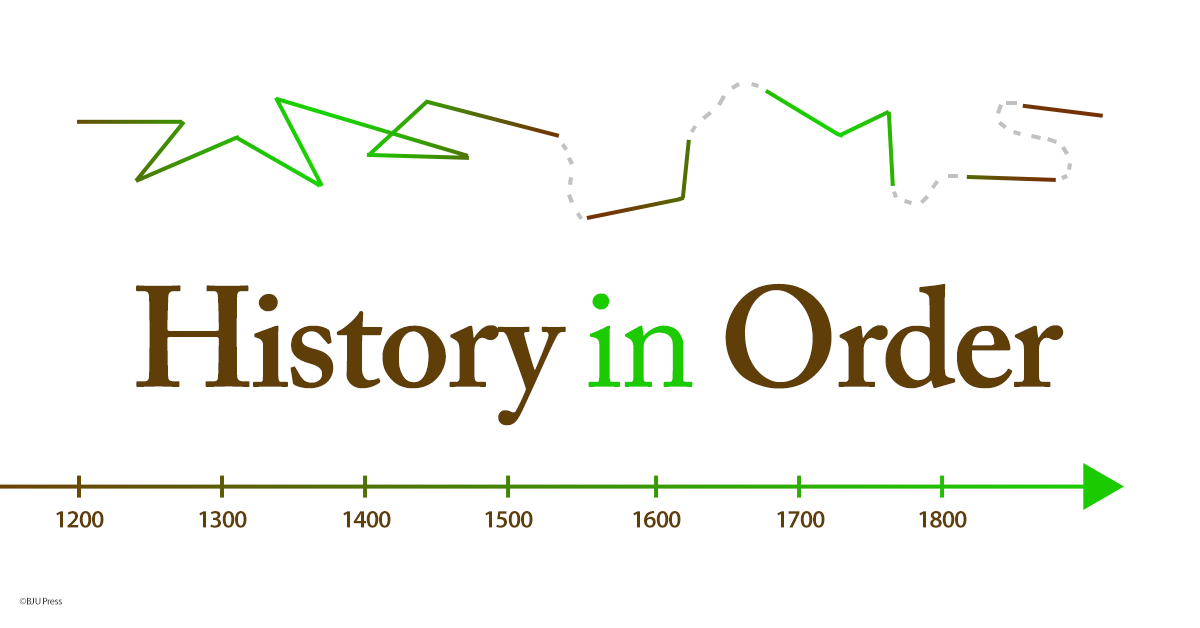Maybe I’m the only one who has this experience, but sometimes when I start telling someone a story about one of my daughters, I see a confused look on the person’s face. Realizing that I’ve left out some critical background information, I backtrack. Once it seems my audience understands, I jump back into the flow of my story, but suddenly moving through time causes them more confusion. Soon the interest and the point of my anecdote is lost.
Teaching history is a lot like that. If you jump around, it can get confusing and seem pointless. That’s why history is best presented chronologically through a textbook—from the beginning of time and progressing in order up to the present. Here are three reasons why teaching history chronologically is best for our children.
It encourages their interest.
When you teach history chronologically, you will find compelling human drama. When told beginning to end, history has conflict, interesting characters, and dramatic reversals. Chronological teaching leads to narrative that is far more fascinating than a string of dates and bold terms. Narrative communicates that history is full of real people making interesting choices.

It provides them clarity.
One of the current trends in public education is to abandon the chronological approach in favor of a thematic approach to teaching history. For example, a teacher could present a unit on “the American identity” and crisscross history to determine what that identity is. This might be helpful for history students in a graduate-level seminar, but not for young children who are just being introduced to history.
Barbara Tuchman, one of my favorite historians, argues that the goal of history is to present the past as it really happened: “Chronological narrative is the spine and the blood stream that bring history closer to ‘how it really was.’”1
That makes complete sense. We live life in an ongoing succession of time. How else can we honestly and clearly present the past except for progressing from one event to the next chronologically? You can also help your children clearly understand history by presenting the chronology visually (i.e., with a timeline).
It develops their critical thinking.
In teaching history, we have the opportunity to develop our children’s critical thinking skills. Chronology presents the best way to develop those skills. When we study a major event, say the Civil War, we start with all of the events and people that contributed to the hostilities between the North and the South. By telling the stories of these people and events, we present the causes of the war. After the war, there are more people and events. These are the effects of the war. This approach teaches our children that events have causes and effects—a concept they can apply to the present. Where are events going? What are the likely effects of this choice? Chronological presentation of history prepares children to do the kind of analysis that will help them become wise citizens.
When something interesting or funny happens at home, I want to share it with my friends at work or church. But if I don’t plan out the presentation of the personal experience, those listening to my story often lose interest, get confused, or fail to see the joke. Teaching history requires the same kind of careful planning. Browse our history series, called Heritage Studies. It provides that careful chronological approach.
1. Practicing History (New York: Random House, 1982), 9.
Leave a Reply